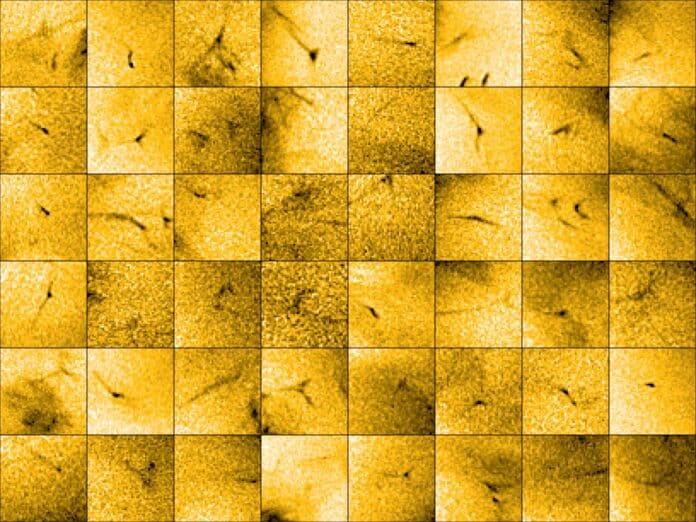The solar wind, which consists of plasma particles, escapes the Sun and flows through interplanetary space, colliding with anything in its path, when it hits Earth’s magnetic field, an atmospheric phenomenon known as aurorae occurs.
Despite being a fundamental feature of the Sun, understanding how and where solar wind occurs near the Sun remains to be discovered. Solar Orbiter has taken us a significant step closer thanks to its superior instrumentation.
The Extreme Ultraviolet Imager (EUI) sensor on the Solar Orbiter provided the data. On March 30, 2022, EUI captured images of the Sun’s south pole. These images show a variety of faint, transient patterns that are connected to tiny plasma jets that are being expelled from the Sun.
Each jet lasts between 20 and 100 seconds and expels plasma at around 100 km/s. These jets could be the long-sought-after source of the solar wind.
Lakshmi Pradeep Chitta, Max Planck Institute for Solar System Research, Germany, said, “We could only detect these tiny jets because of the unprecedented high-resolution, high-cadence images produced by EUI. In particular, the images were taken in the extreme ultraviolet channel of EUI’s high-resolution imager, which observes million-degree solar plasma at a wavelength of 17.4 nanometres.”
The fact that analysis demonstrates that these patterns are brought on by plasma being ejected from the solar environment is particularly significant.
Andrei Zhukov, Royal Observatory of Belgium, a collaborator on the work who led the Solar Orbiter observing campaign, said, “One of the results here is that to a large extent, this flow is not uniform, the ubiquity of the jets suggests that the solar wind from coronal holes might originate as a highly intermittent outflow.”
Each jet has a modest amount of energy linked with it. The X-class solar flares are at the high end of coronal phenomena, and the so-called nanoflares are at the bottom. An X-flare contains a billion times more energy than a nanoflare. Even less energetic than that, the tiny jets found by Solar Orbiter manifest around a thousand times less energy than a nanoflare and direct the majority of that energy into the evacuation of the plasma.
The new measurements’ inference of their ubiquity suggests that they are expelling a sizable portion of the particles we observe in the solar wind. Additionally, smaller, more frequent events can offer even more.
David Berghmans, Royal Observatory of Belgium and principal investigator for the EUI instrument, said, “I think it’s a significant step to find something on the disc that certainly is contributing to the solar wind.”
At present, the Solar Orbiter is still circling the Sun close to its equator. So, in these observations, EUI is looking across the south pole at a grazing angle.
It shows a ‘coronal hole’ near the Sun’s south pole. Subsequent analysis revealed many tiny jets being released during the observation. They show up as little flashes of bright light across the image. Each one expels charged particles, known as plasma, into space.
Credit: ESA & NASA/Solar Orbiter/EUI Team; acknowledgment: Lakshmi Pradeep Chitta, Max Planck Institute for Solar System Research
Daniel Müller, ESA Project Scientist for Solar Orbiter, said, “It’s harder to measure some of the properties of these tiny jets when seeing them edge-on, but in a few years, we will see them from a different perspective than any other telescopes or observatories so that together should help a lot.”
Journal Reference:
- L. P. Chitta, A. N. Zhukov et al. Picoflare jets power the solar wind emerging from a coronal hole on the Sun. Science. DOI: 10.1126/science.ade5801
